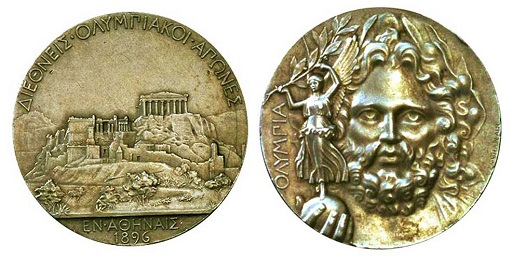1 Historical influences
In the late 19th century, inspired by German excavations in Olympia and the introduction of Physical Education programmes in schools, the French baron Pierre de Coubertin campaigned for the revival of the Olympics. The Ancient Games had been banned in the 390s CE by Theodosius I (along with all other expressions of non-Christian cults), and, except for a few re-creations dotted through history (e.g. events held at the Hippodrome of Constantinople during the Byzantine period, the outlandish Cotswold Games of the 17th century or the Wenlock Games of the mid-19th century), the Olympic spirit had remained largely dormant.
De Coubertin’s efforts to stage a modern Olympic Games were initially met with apathy and limited success. However, after a passionate campaign (which included extravagant banquets and thrilling torch-lit spectacles), he obtained the approval of King George I of Greece to bring the Games back to life in 1896. From the outset, de Coubertin adopted the Ancient Greek Games and their underlying ideals as the main inspiration for his Olympic revival. For example, he was an ardent believer in the Classical principle of a healthy mind in a healthy body, so he ensured that the rules drafted by the International Olympic Committee [Tip: hold Ctrl and click a link to open it in a new tab. (Hide tip)] (which would become the text of the Olympic Charter) reflected an emphasis on moral values and a concern with virtue and discipline as well as physical achievements. Promoting global peace (a modern ‘Olympian truce’) was also at the heart of the modern Olympic movement. Like the Ancient Greek Games, the first modern Olympics insisted on the principle of amateurism. (The participation of professional athletes was perceived as a threat to the Olympic ideals of fairness and equal opportunity, although, in practice, this measure simply exacerbated the unfairness and social inequality of the Victorian period, since only the richer gentlemen of leisure could afford the time and expense of taking part in the Games.) The athletic events of the 1896 Olympics were also combined with parallel spectacles of art, music, poetry and architecture, like the Ancient Games. De Coubertin himself would later admit that these spectacles were perhaps a weaker aspect of the first modern Olympics, which, ironically, is probably not far removed from the opinions of some Ancient Greek spectators – Pausanias (X.9.2), for instance, describes the musical competitions of the Pythian Games as ‘scarcely worthy of serious attention’.
The first modern Olympics were held in Athens rather than their original site of Olympia, partly for political reasons (Athens was now the capital of the recently established Greek nation) and partly due to the availability of infrastructure. A relatively small number of participants attended these Games and the quality of the athletes was variable to say the least, but, crucially, the event planted the seed of the Olympic revival and initiated a process that has led to the forging of the Modern Games that we know today. Since 1896, the modern Olympics have been held every four years (except 1916, 1940 and 1944). They have become a truly global event, and, although many aspects have changed since their inception in Ancient Greece (and continue to change as the Games are adapted to the 21st century), the underlying Classical ideals of peace, self-improvement, equality and mutual respect still resonate. By espousing and promoting these ideals, the Olympics act as a bridge between the past and our present.

